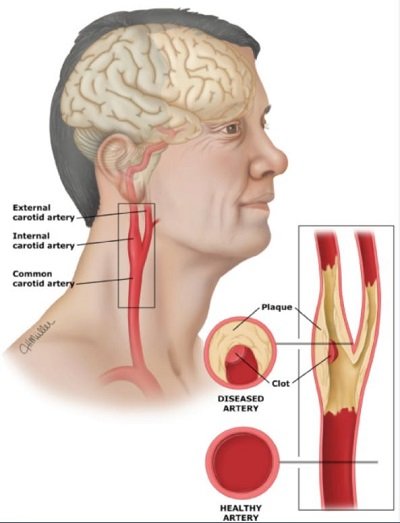Carotid Artery Blockage & Disease
We can diagnose and treat this life-threatening condition.
We can diagnose and treat this life-threatening condition.
Carotid artery disease occurs when fatty deposits (plaques) clog the blood vessels that deliver blood to your brain and head (carotid arteries). The blockage increases your risk of stroke, a medical emergency that occurs when the blood supply to the brain is interrupted or seriously reduced.
Carotid artery disease develops slowly. The first sign that you have the condition may be a stroke or transient ischemic attack (TIA).
A lack of blood flow to the brain from stroke or TIA deprives your brain of oxygen. Stroke is the most common cause of death and the leading cause of permanent disability in the United States.

Consider a screening to see if you are at risk.
In its early stages, carotid artery disease often doesn’t produce any signs or symptoms. The condition may go unnoticed until it’s serious enough to deprive your brain of blood, causing a stroke or TIA. However, we can screen for the problem at any time. If you have risk factors for the condition, we can perform a non-invasive ultrasound procedure to detect the condition.
The goal in treating carotid artery disease is to prevent stroke. Specific treatments depend on the extent of blockage in your carotid arteries.
If blockage is mild to moderate, Pinellas Vascular may recommend:
If blockage is severe, or if you’ve already had a TIA or stroke, your doctor may recommend removing the blockage from the artery. The options include:
Click on the image above to view and download the PDF about Carotid Artery Disease, its causes, symptoms, and treatment.
View information on Carotid Artery Disease provided in conjunction with the Society for Vascular Surgery, of which Dr. Bunnell is a recommended member. Visit: SVS information about Carotid Artery Disease.
When you are ready to discuss treatment options, we look forward to scheduling a consultation with you.
Pinellas Vascular is ready to assist you with your vascular condition or concern. Send us a message and we will get back with you quickly.